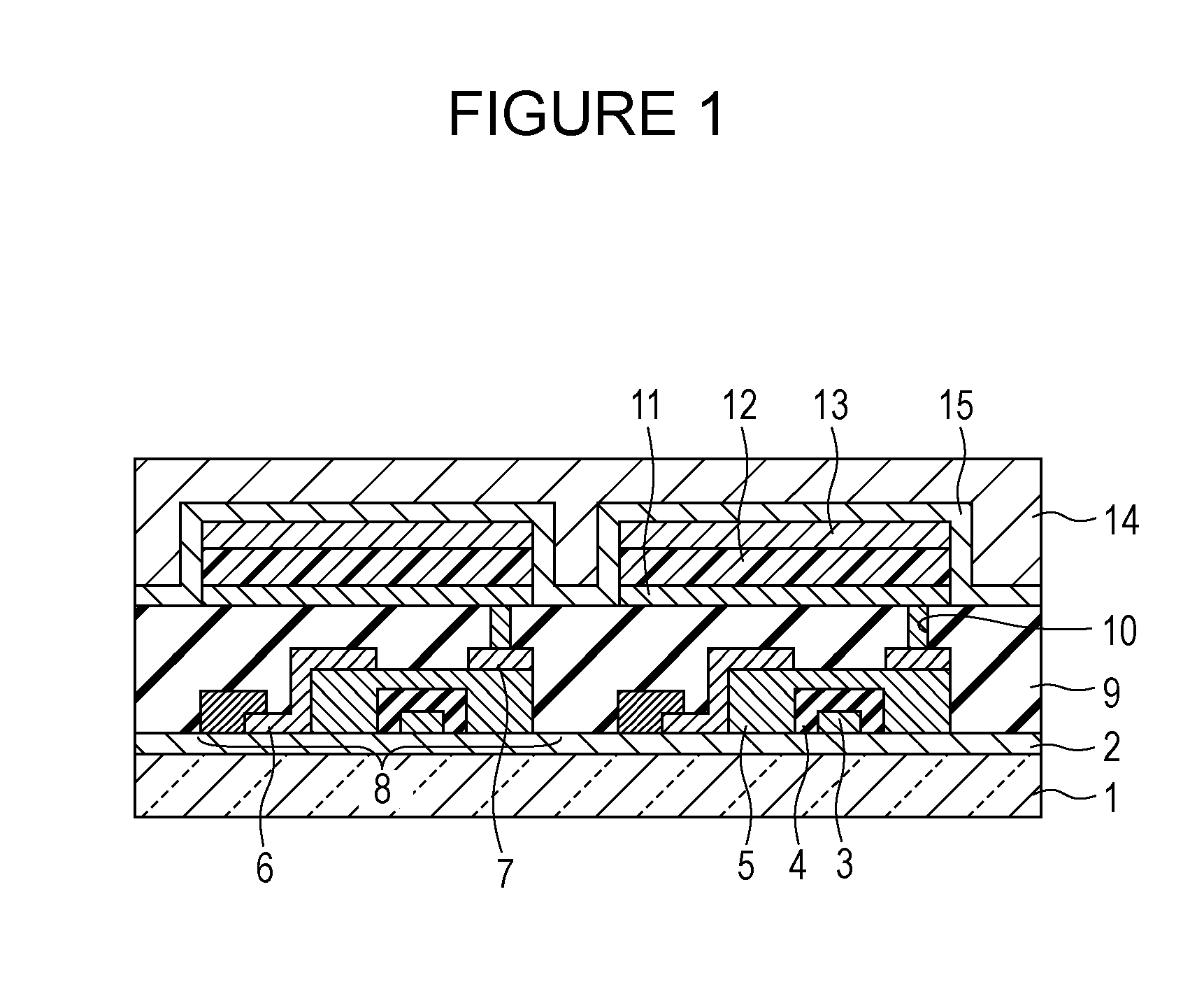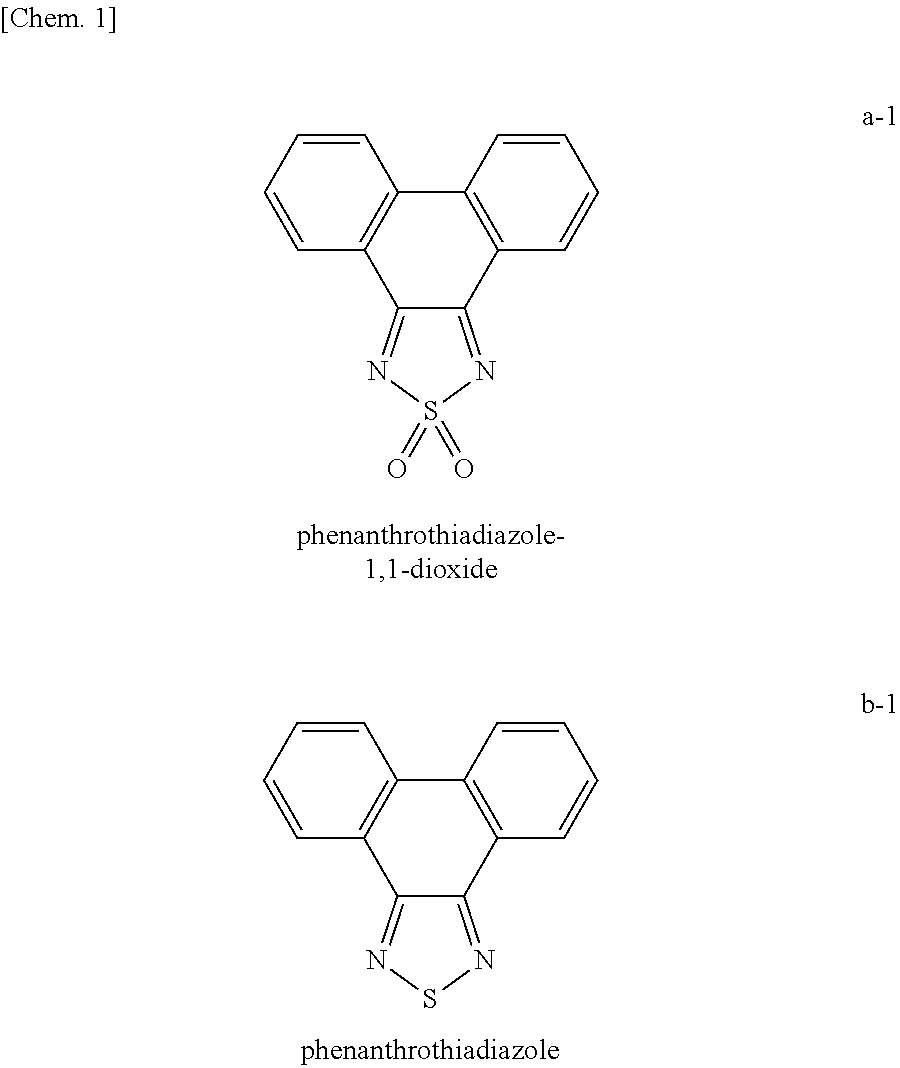Novel organic compound and organic light-emitting device including same
- Summary
- Abstract
- Description
- Claims
- Application Information
AI Technical Summary
Benefits of technology
Problems solved by technology
Method used
Image
Examples
example 1
Synthesis of Exemplified Compound A3
[0125]
[0126]To 40 mL of a dichloromethane solution, 1.0 g (4.8 mmol) of G1, 1.9 g (19 mmol) of triethylamine, and 857 mg (7.2 mmol) of thionyl chloride were added. The mixture was heated to 50° C. and stirred for 6 hours. After cooling, water and chloroform were added thereto. The mixture was subjected to extraction with chloroform, followed by drying over sodium sulfate. The solvent was removed by evaporation. The residue was dissolved in toluene. The toluene solution was passed through silica gel. The solvent was removed by evaporation. Recrystallization of the residue from an ethyl acetate-toluene mixed solvent gave 0.30 g (yield: 33%) of G2 as pale-yellow needle crystals.
[0127]To a solution of 176 mg (0.745 mmol) of G2 and 22 mL of dichloromethane, 1.4 mL of trifluoromethanesulfonic acid was added. The mixture was stirred at room temperature for 30 minutes. Then water and chloroform were added thereto. After neutralization with sodium bicarbon...
example 2
Synthesis of Exemplified Compound A1
[0134]Exemplified compound A1 was synthesized as in Example 1, except that compound G5 described below was used in place of compound G4.
[0135]The M+ of exemplified compound A1, i.e., 541, was confirmed by mass spectrometry.
[0136]The T1 level of exemplified compound A1 was measured in a dilute toluene solution in the same way as in Example 1 and found to be 469 nm.
example 3
Synthesis of Exemplified Compound A5
[0137]Exemplified compound A5 was synthesized as in Example 1, except that compound G6 described below was used in place of compound G4.
[0138]The M+ of exemplified compound A5, i.e., 581, was confirmed by mass spectrometry.
[0139]The T1 level of exemplified compound A5 was measured in a dilute toluene solution in the same way as in Example 1 and found to be 470 nm.
PUM
 Login to View More
Login to View More Abstract
Description
Claims
Application Information
 Login to View More
Login to View More - R&D
- Intellectual Property
- Life Sciences
- Materials
- Tech Scout
- Unparalleled Data Quality
- Higher Quality Content
- 60% Fewer Hallucinations
Browse by: Latest US Patents, China's latest patents, Technical Efficacy Thesaurus, Application Domain, Technology Topic, Popular Technical Reports.
© 2025 PatSnap. All rights reserved.Legal|Privacy policy|Modern Slavery Act Transparency Statement|Sitemap|About US| Contact US: help@patsnap.com



